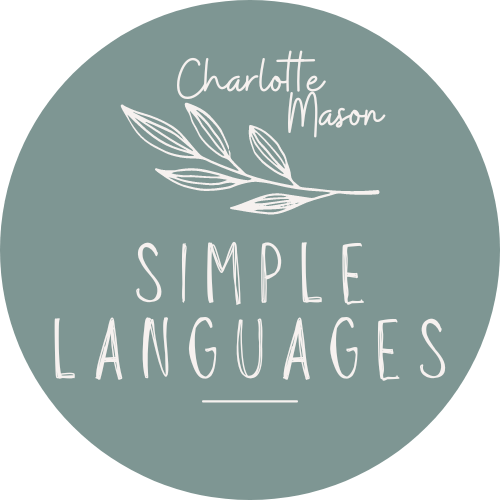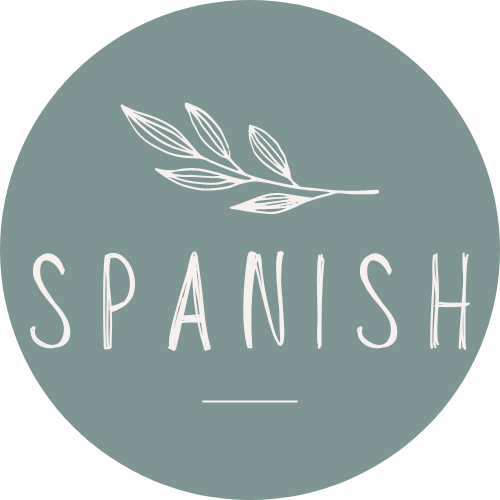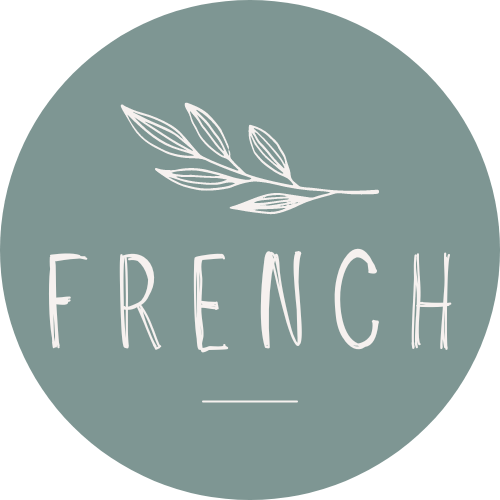About
About the Method
We have created our materials based on a method that has been successful for more than a hundred years. The most similar method nowadays would be the Natural Language Acquisition Method. In this method, people learn a foreign language in the same way the did their first. Not through worksheets or grammar or list of words but through real life conversations, literature, play and songs.
Many years ago, the students at Charlotte Mason’s schools studied French an German as living languages. Her method was so successful that children could even narrate (or "re-tell in their own words") in French what they read or listened to at the age of 6.
They learned French as a second language because it was the language that well educated people in England spoke. In the United States though, most students learn Spanish as a second language due to it being the 2nd most spoken language in the country.
The well educated children in that age learned French gradually over many years with 3-4 different stages:
Preschool: Before starting school, many children already knew some French because they had been under the care of a French nurse (caregiver) and have learned it informally. They learned it through play, talking with the French nurse, and listening to her.
Stage 1: Grades 1-3. She introduced the target language with songs, literature, and the Gouin series (more about Gouin later). Although she recommended picture books over the Gouin approach for mothers that don't speak the target language.
Stage 2: Grades 4-6. She expanded Stage 1 and added reading and writing. Also, here she introduced a third language (in her case, German).
Stage 3: Grades 7-9. She expanded the second and third languages and added a fourth (Italian).
Charlotte Mason Simple Languages gives you the tools you need to teach foreign language like a native speaker. Even if you can't speak the language yourself, you can learn alongside your students.
Now, here are some of Charlotte Mason’s own words to help us understand her foreign language teaching method. These principles are the foundation of the Charlotte Mason Simple Languages curriculum:
1.-Start at an early age, learning two to six words daily:
"The children should learn French orally, by listening to and repeating French words and phrases; that they should begin so young that the difference of accent does not strike them, but they repeat the new French word all the same as if it were English and use it as freely; that they should learn a few–two or three, five or six– new French words daily, and that, at the same time, the old words should be kept in use–are points to be considered more fully hereafter…” Home Education, page 80.
2.-Have daily lessons, which may be outdoors. Focus on nature vocabulary.
"...it is so important to keep tongue and ear familiar with French vocables, that not a lesson should be omitted. The French lesson may, however, be made to fit in with spirit of the other out-of-door occupations; the half-dozen words may be the parts– leaves, branches, bark, trunk of the tree, or the colors of the flowers, or the movements of bird, cloud, lamb, child; in fact, the new French words should be but another form of expression for the ideas that for the time fill the child’s mind.” Home Education, pages 80-81.
3.-Delay written words.
"The child should never see French words in print until he has learned to say them with as much ease and readiness as if they were English." Home Education, page 301.
4.-Learn idioms.
"Of course, his teacher will take care that, in giving words, she gives idioms also..." Home Education, page 301.
5.- Learn words in the context of a sentence, and keep them in use daily.
"...and that as he learns new words, they are put into sentences and kept in use from day to day." Home Education, page 301.
6.- The teacher keeps track of the new sentences.
"A notebook in which she enters the child's new words and sentences will easily enable the teacher to do this."
7.- Learning through Gouin’s series (much like “Total Physical Response” instruction).
"No doubt Mr. Gouin's method should be more successful than any other in steeping the student (child or man) in German or French thought." Home Education, page 303
In short, the Gouin Series are a group of very short statements describing steps of an action. A ball series may look like this:
I pick up the ball.
I throw the ball.
I drop the ball.
The ball bounces.
You act out all the statements as you say them in English first and then in the target language to make connections and learn each word in context so that you naturally think in the second language.
You can read Gouin's book here
8.- Learning through book and pictures.
"The method of teaching may be varied, partly because that recommended by M. Gouin requires a perfect command of the French tongue, and teachers who are diffident find a conversational method founded on book and picture easier to work and perhaps as effectual-more so, some people think..." Home Education, page 306.
About Charlotte Mason Simple Languages (CMSL)
If you are a Charlotte Mason (CM) inspired homeschooling family, you know how important foreign language studies were for Ms. Mason:
"The daily French lesson is that which should not be omitted. The children should learn French orally, by listening to and repeating French words and phrases; that they should begin so young that the difference of accent does not strike them, but they repeat the new French word all the same as if it were English and use it as freely; that they should learn a few–two or three, five or six– new French words daily, and that, at the same time, the old words should be kept in use–are points to be considered more fully hereafter…” Home Education, page 80.
Now, most of the CM educators I know are not teaching a second language with the CM method. Why is that the case? I believe one of the reasons is simply because there are not many curriculum options that can gently weave into their daily CM activities.
And this is why CMSL is a great option for you. CMSL has been specially designed with you in mind so that you learn a foreign language during your nature walks, morning basket, tea time, and through books, nature study, picture study, copy work, read-alouds, music, games, or during a set school time/morning basket.
Something else that makes CMSL a great option for your family is that the content was created by CM homeschooling bilingual, biliterate and bicultural parents from the country in which the target language is spoken.With Native levels of English and Spanish (from Mexico), French (France), German, and Russian raising trilingual, multicultural kids.
And you may ask why is that so important? Well, for two reasons:
1.- The content was created in Spanish (or the target language you chose) as opposed to be created in English first and then translated/adapted into Spanish. This can make a big difference because there are always mistakes in a translation. Here's an example of how translated Spanish can go wrong:
English: Please go to the living room.
Translated: Por favor ve a la sala (please go to the living room).
How it actually is said in Mexico: Ve a la sala por favor (go to the living room please).
So if you want to speak like a Native, always make sure the content you're learning was first created in the target language and limit what is translated/adapted.
And this takes us to the second reason...
2.-Languages can vary a lot depending on the country. The English spoken in the UK, in the US or in South Africa vary greatly in slang, accent, and vocabulary. There will be a lot of similarities, and you can understand each other for the most part, but there are some differences as well. The same happens with Spanish in Mexico or Spain or any other Spanish speaking country.
And these differences are not just accent; it could be that the same word has a completely different meaning in two countries. Here's an example:
Mexico: Torta (a sandwich)
Spain: Torta (a cake)
And although this curriculum uses some literature from other Spanish speaking countries (for the sake of exposure to great authors), the audios will be read with a Mexican accent.
Now that you know what you need to look for in a Foreign Language curriculum, let me tell you that CMSS was both:
*Designed to be used by homeschooling families. But enjoyed by co-ops and schools as well.
*Content created by people that were born and raised in the target language (you get authentic, grammatically and culturally appropriate sentences).
Our Curriculum is divided in Units to help you organize your study better. Each Unit is designed for you to teach it in one week (5-6 words daily) or two weeks (2-3words daily). But you are the teacher, and you know your child, so feel free to adjust those times as you wish.
In each Unit you will learn Spanish with:
-A science poster with QR codes with linked audio files and instructions.
-A poem with the QR code linking to the audio for the poem, some sentences to talk about the poem, and images to help understand the poem (with instructions).
-A traditional Spanish children’s song with a QR code linking to read aloud audio of the song lyrics and the recorded song. These are provided on a "no word" card with images of the nouns and instructions.
-A Gouin Series with instructions and a QR code linking to audio files.
-A Spanish challenge that will make you all speak Spanish around the house one sentence at a time and build a real life conversation. The challenge phrase is printed on a card with a QR code linking to an audio file of the phrases.
-A Bible verse and a Psalm to read and/or memorize.
We also include picture book lessons with audio files and instructions.
As you can see, all the materials include Spanish (Native speaker) audios that you can easily access by scanning a QR code conveniently located on each card/poster. This is why any family can learn with this curriculum, even if you don't speak any Spanish at all!




